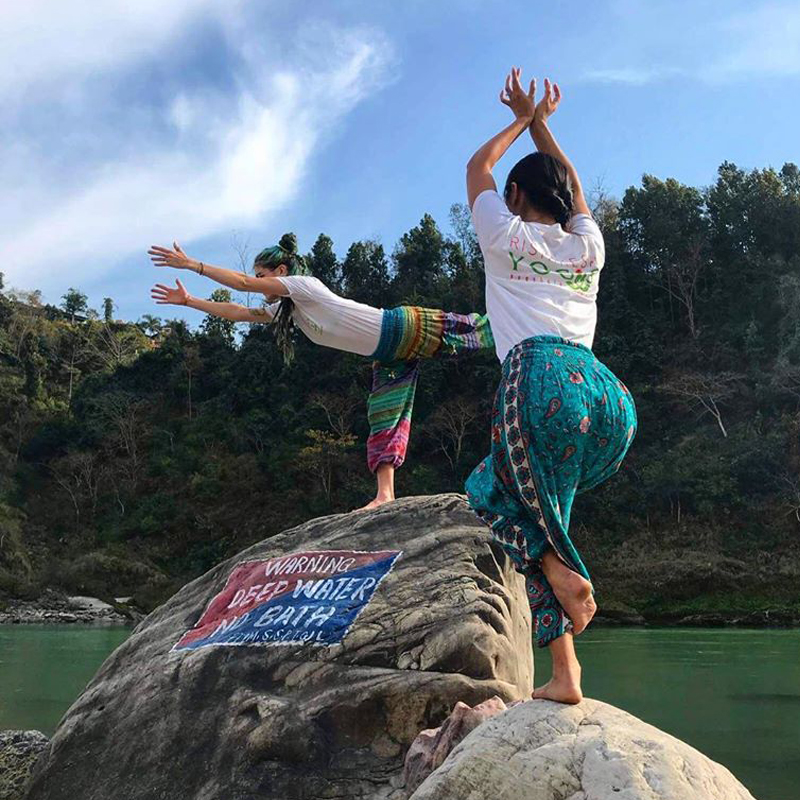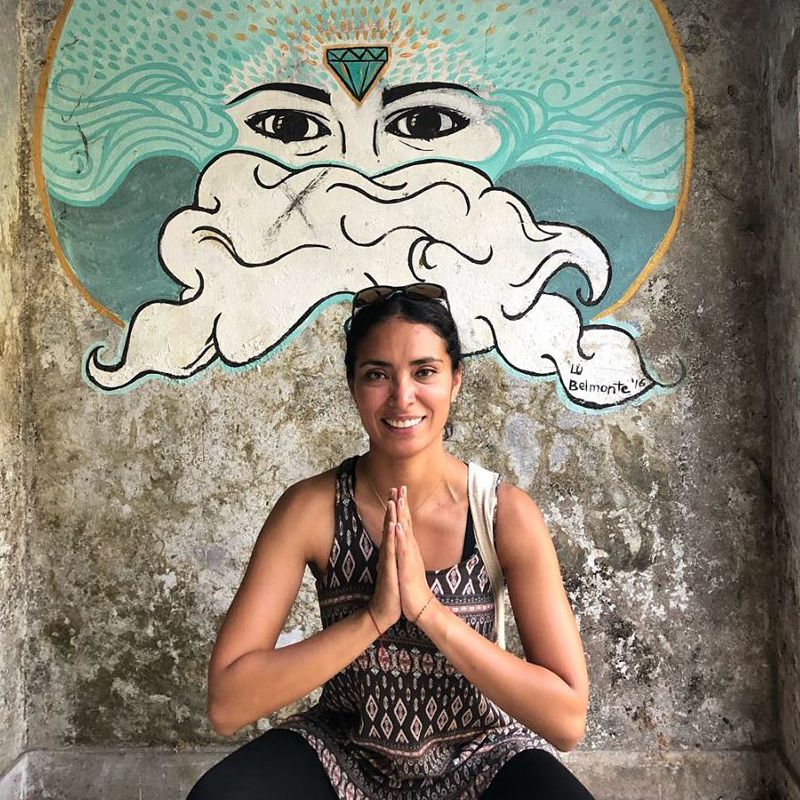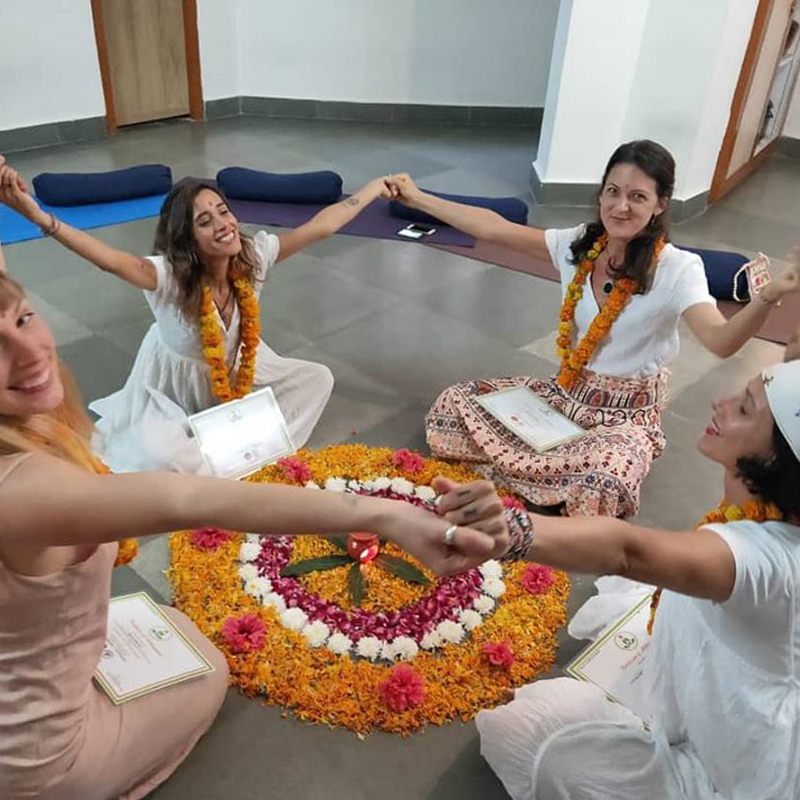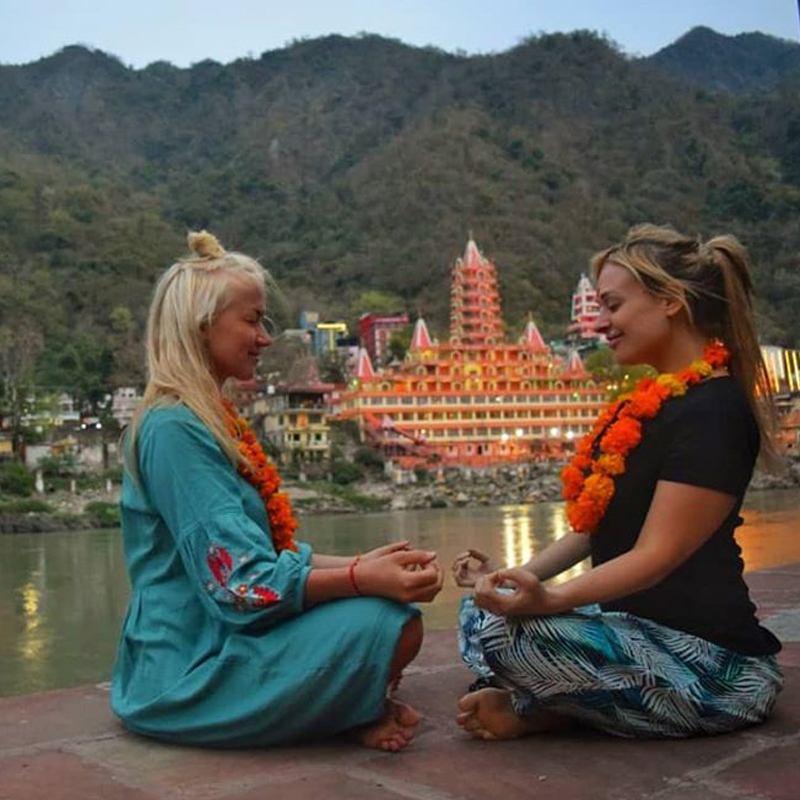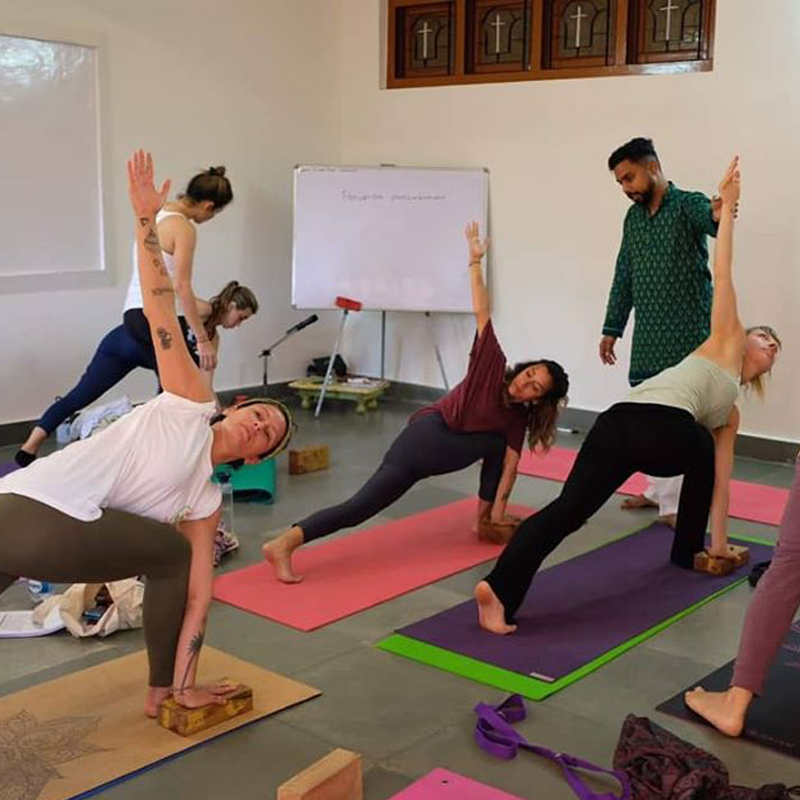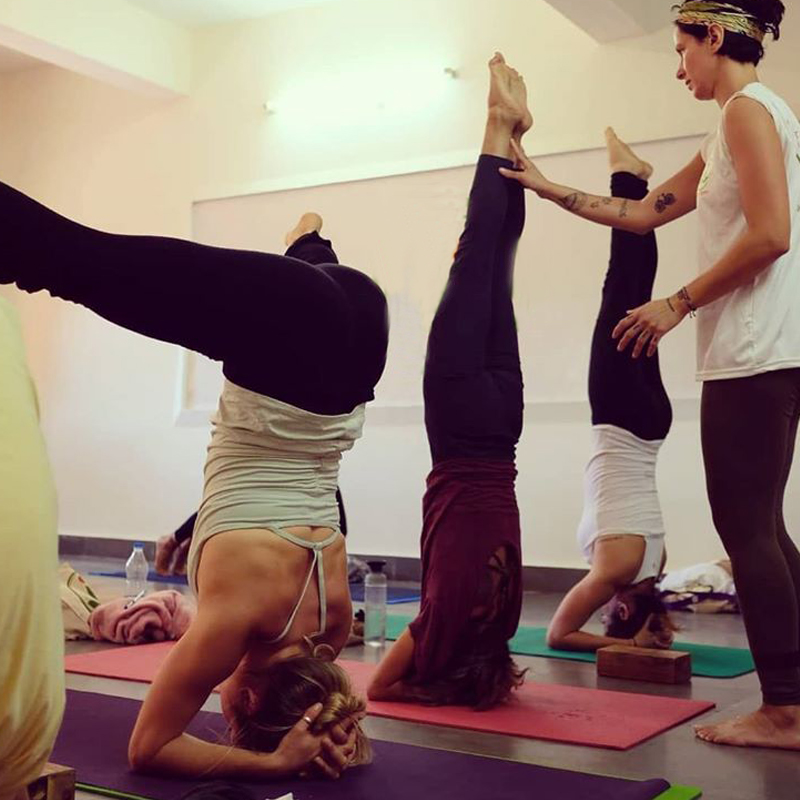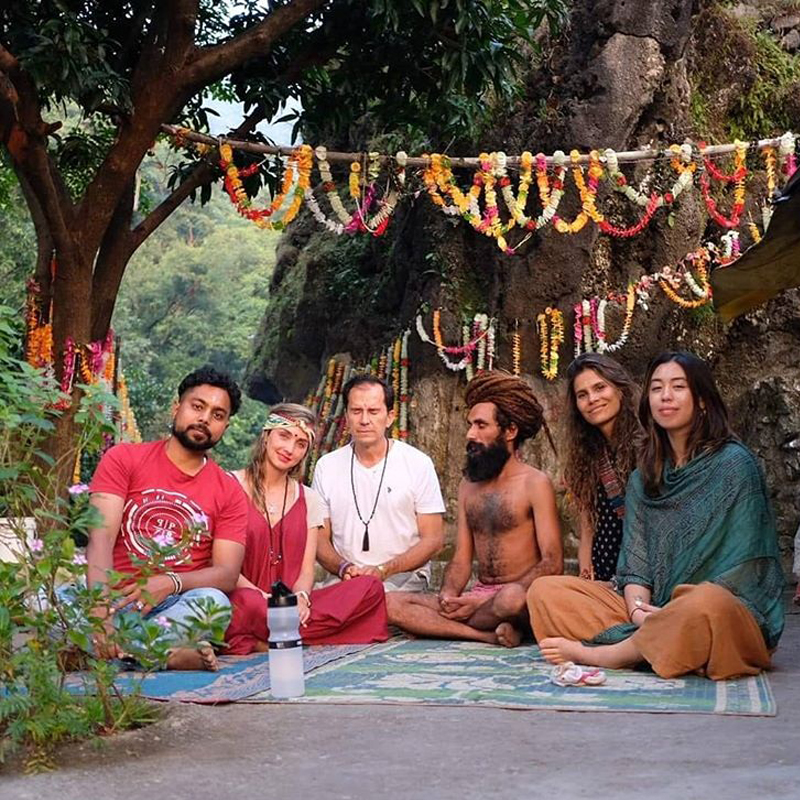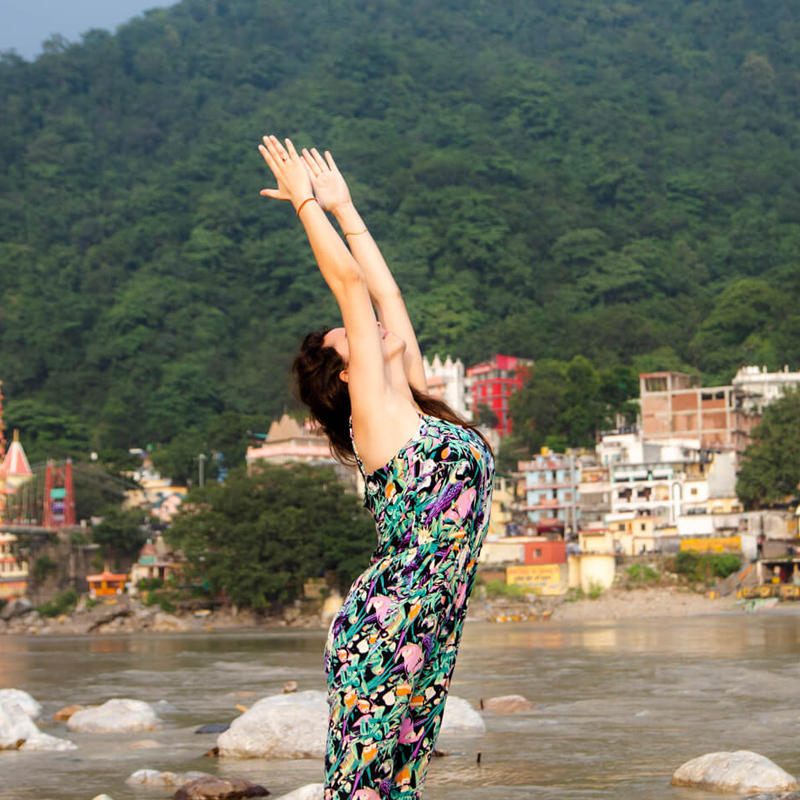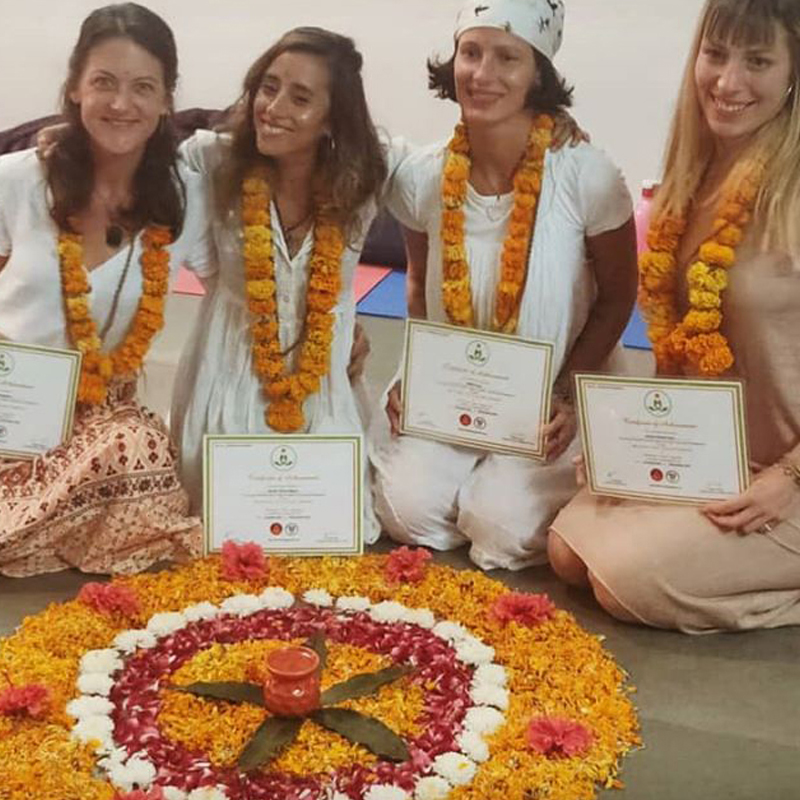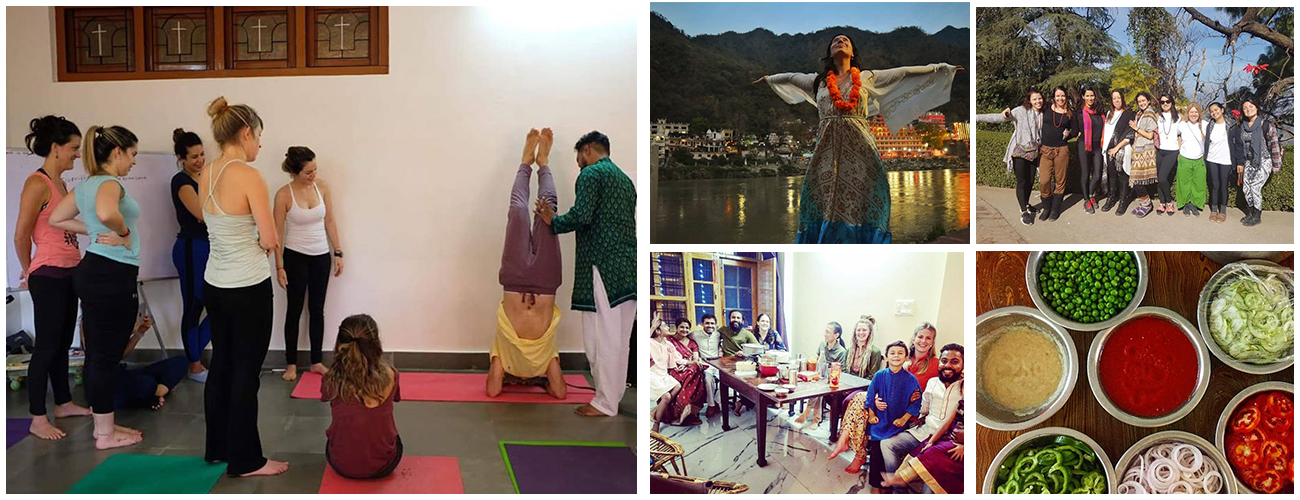
200 Hour Yoga Teacher Training Rishikesh (Kundalini YTTC)
Overview - 200 Hour Yoga Teacher Training Rishikesh (Kundalini YTTC)
The modules developed for our Kundalini Yoga Teacher Training intends to deepen one’s awareness, experience and understanding of Kundalini and Kriya Yoga traditions in progressive fashion.
The entire 200 Hour Kundalini Yoga Teacher Training Course is divided into three components. The modules of the curriculum are created in such a way; each module from 1st Component leads you to the next one in a very progressive and systematic fashion. There is a subtle blend of various elements of teachings which a recognized Yoga Teacher Training Program in India must entail. We have listed topics of our curriculum in the curriculum section.This itinerary gives you a glimpse of activities on a typical day at our centre during 200 Hour Kundalini Yoga Teacher Training Program in Rishikesh, India. There will be three practice and three theory sessions every day to reflect equal emphasis on practical as well as theoretical aspects of teachings.
Have any question?
No money will be charged, feel free to enquire.
Images Gallery
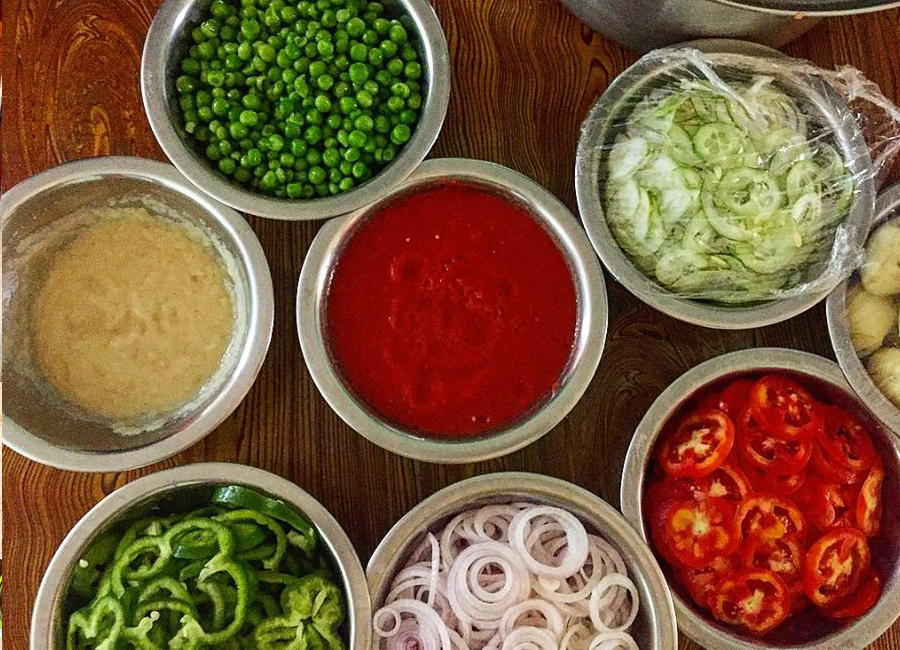

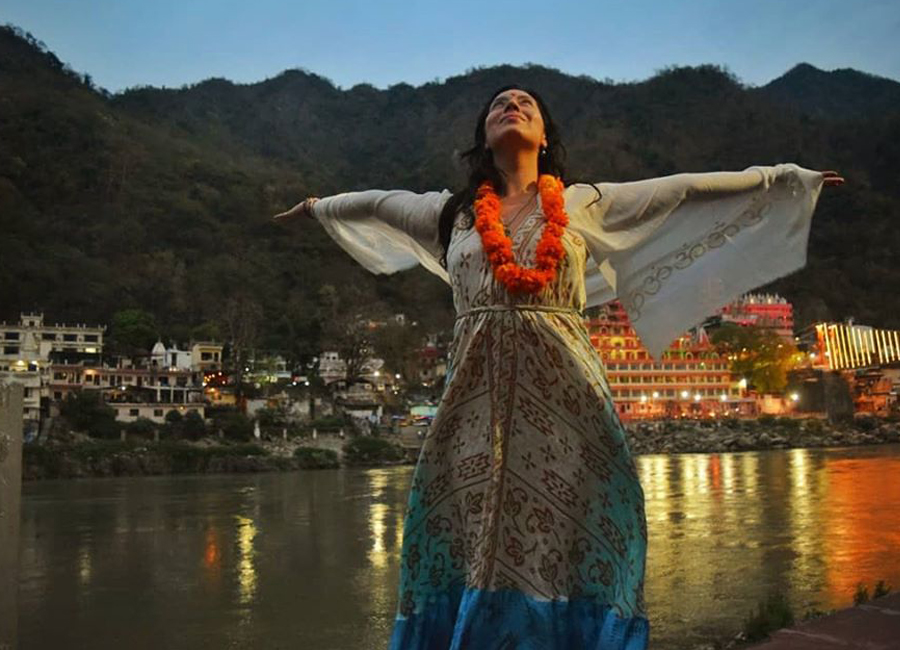
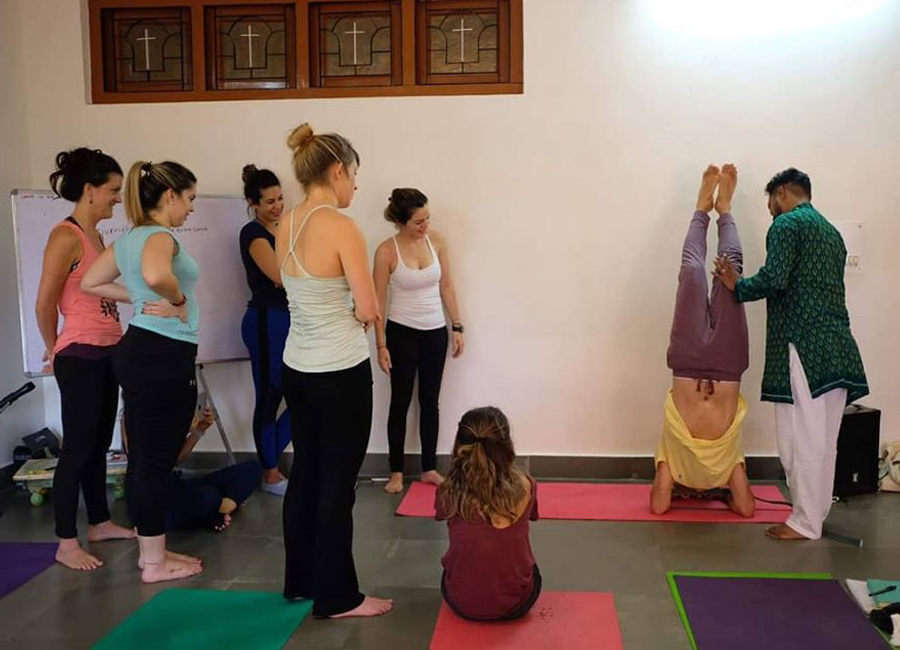
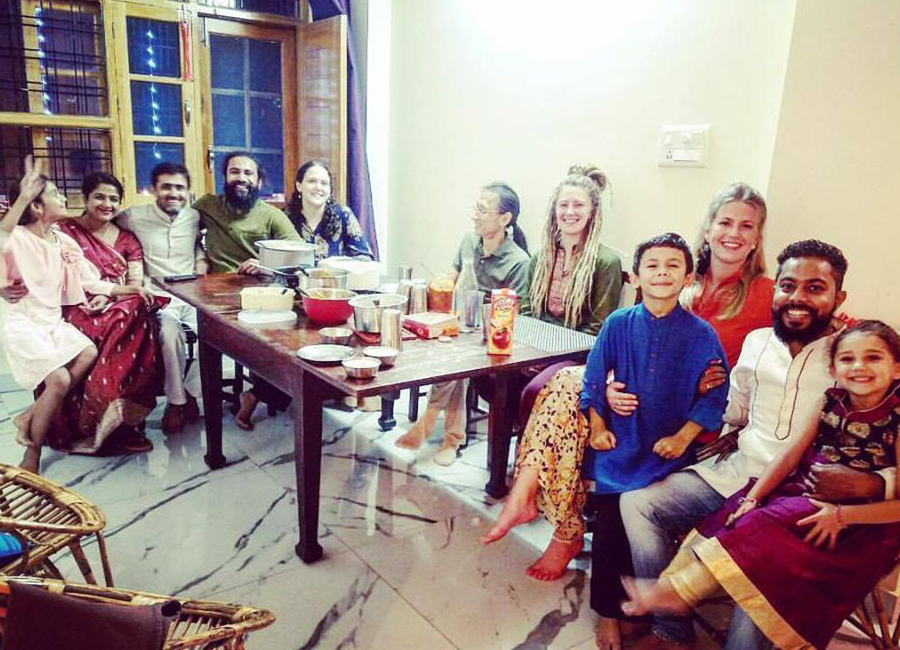
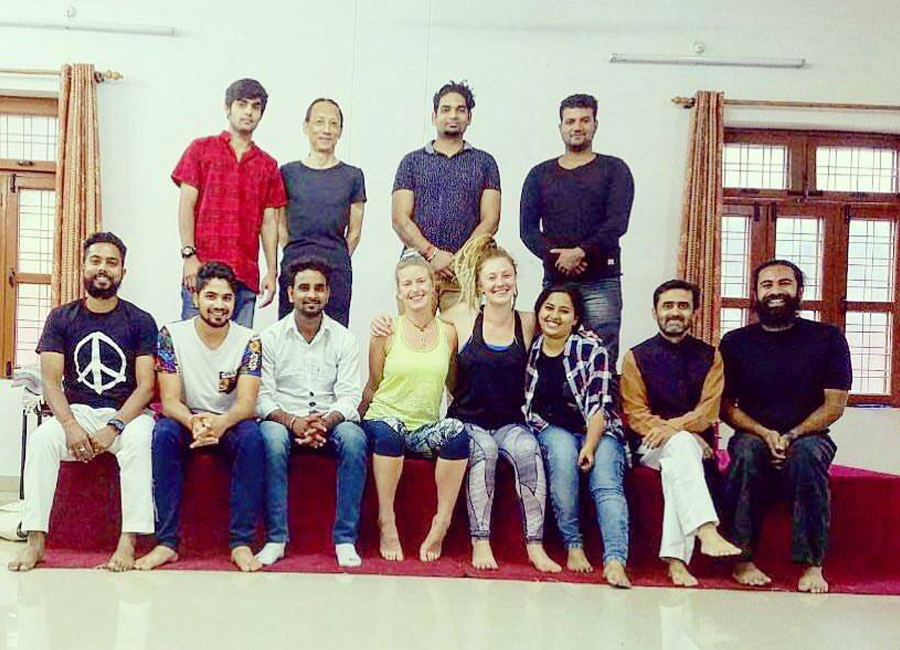
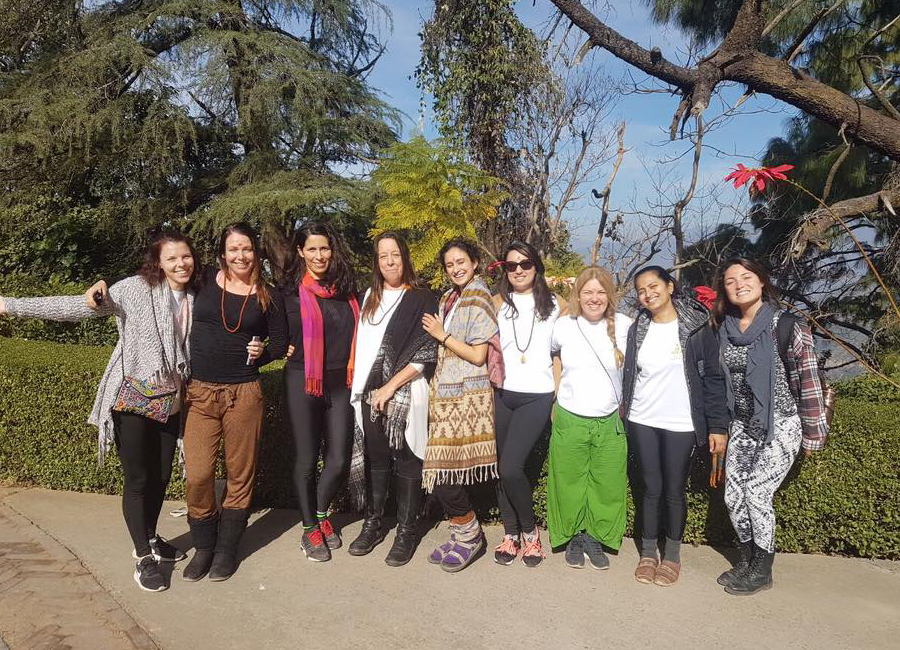
Program
This 200 hour Kundalini Yoga Teacher Training program, is one of the most immersive and experiential programs currently taught in Rishikesh. The modules developed for our Kundalini Yoga teacher Training intends to deepen one’s awareness, experience and understanding of Kundalini and Kundalini Yoga traditions in progressive fashion. As a path of awakening, in our Kundalini and Kriya yoga teacher training course; we employ the techniques used in traditional texts of Hatha yoga, Kundalini and Tantra texts.
- Our teaching is rooted in the traditional scriptures such as Hatha Yoga Pradipika, Gheranda Samhita, Patanjali Yoga Sutra, Yoga Upanishads, and Tantric scriptures.
- Everyday itinerary consists of a balanced blend of in-depth discussion on the nuances of Kundalini yoga philosophy and practical techniques on Chakras and Nadi Systems.
- This is an ideal program for yoga teachers, practitioners of meditation and Kundalini Yoga.
- There are 3 practical sessions and 3 theory workshops each day on the system of Tantra philosophy, Kundalini Yoga, Chakra system and techniques of Kriya, Kundalini and Chakra meditations.
- Teachers of Rishikesh Yogis participating/teaching in Kundalini yoga teacher training course carry a vast experience of living and teaching the system of Kriya and Kundalini Yoga in ashram environment.
- We will provide useful and informative handouts on chakras, various kriya and Kundalini Yoga techniques and practices for each chakra.
- On request our centre will also organize dedicated additional complementary sessions for those who are new to this tradition of Kriya and Kundalini Yoga.
- Dedicated workshops sessions on each chakra; discussing psychotherapeutic, spiritual and Pranic dimensions of chakra system.
- Modules created in 200 hour kundalini yoga teacher training course incorporate innovative workshops sessions on Yantra meditation and visualization, Chakras and their psychotherapeutic significance, learning how to create different yoga programs to influence the energies of the chakras, intensive training workshop sessions on chakra activation, integrated chakra meditation session, Chakra Yoga Nidra and Tantric Dharana meditations.
Food & Accommodation
The ashram provides neat and clean rooms with attached washrooms. The rooms have proper ventilation and 24- hour power backup facilities. The ashram itself is located in a peaceful location away from the city which makes it a perfect location to practice yoga and meditation in peace.
Breakfast
Yoga school provide nourishing and balanced breakfast every day. Breakfast prepared in our kitchen is nutritious, tasty, balanced and prepared from fresh nuts, vegetables, fruits and grains. During your stay with us, you would have an opportunity to taste traditional Indian breakfast, such as different kinds of porridges, Idli (savoury cake), Poha (made from beaten rice), Upma (wheat rava (semolina) or coarse rice flour dish), Sprout salads, and many more. In case you are on vegan diet, we can prepare breakfast separately for you upon request.
Lunch
Food served at lunch is pure vegetarian, sattvik, vitalizing, wholesome and nutritious. The food prepared in our kitchen includes most vegetables, ghee (clarified butter), fruits, legumes, and whole grains. These are ingredients that enhance clarity and lightness, keeping the body light and nourished and the mind clear. Time to time during the course we change the nature of the food according to the yoga practices you perform.
Dinner is also served
Syllabus
Foundation
Paper-1 (Technique, Training and Practice) lays a strong foundation of traditional Hatha Yoga, Vinyasa yoga and Meditation techniques sourced from authentic and time proven systems of Yoga traditions.
Purpose of these classes in component-1 is to equip the practitioners with understanding and knowledge of the fundamental techniques of Asana, Pranayama, Mudra, Bandha and Hatha Yoga cleansing techniques used in Kundalini Kriyas.
Training Modules:
Practical (Hatha Yoga)
Asana: PM Series 1, 2, 3 (Preliminary Hatha yoga movements), Standing and Balancing Asana Series, Backward Bending Series, Forward Bending Series, Vajrasana Series, Meditation Asana Series, Introduction to Sun Salutation, Astanga-Vinnyasa flow
Pranayama: Pre-Pranayama techniques, Nadishodhana, Kapalbhati, Bhramari, Ujjayi and Bhastrika- Preparatory
Mudra and Bandha: Hand Mudras, Head Mudra, Prana Mudra with Full Yogic Breath (Awareness on physical level), Jalandhara Bandha, Shambavi Mudra, NasikagraDhristi
Shatkriya: Neti and VamanDhauti (Kunjal Kriya)
Practical (Meditation):
Meditation techniques covered during component-1 systematically train the participants into process of meditation. The techniques taught during the component gradually familiarize one with the aspects of Kundalini Yoga meditation process.
Techniques Taught:
- Kaya-Sthairyam (Technique on Body-Awareness and Mental steadiness)
- Antar Mouna (A technique on Mindfulness of Thoughts): Stages: 1, 2)
- Ajapa Japa: Stages: 1, 2 (Awareness of spontaneous repetition of mantra) )
- Yoga Nidra (A technique of guided yogic relaxation) Stage: Beginner)
- Chakra Shuddhi (A technique of chakra cleansing) )
- Ajna Chakra Activation Session- Trataka (intense concetration) on Dot, Yantra (archetypal symbol), Nose tip gazing technique, Shambhavi Mudra with Om mantra chanting, Ajna Space Visualization Technique)
Paper-2 in component-1 introduces one to founding principles of yoga philosophy, its branches, various approaches and affiliated metaphysical background. There is in-depth discussion on Classical system of Patanjali Raja Yoga and traditional Hatha Yoga. Understanding of both systems is essential in order to grasp the concept of Kundalini Yoga.
Topics Taught:
- Foundation of Yoga Philosophy
- Definition, Historical Sketch, Branches, Classical System of Raja Yoga of Patanjali: Background of Samkhya Philosophy, History and Origin of Raja Yoga
- Tradition of Hatha Yoga
- Historical and Philosophical background of Hatha Yoga, Purpose and Literature. Aspects of Hatha Yoga with reference to Hatha Yoga Pradipika and Gherand Samhita.
- Aspects and purposes of Asana (Posture), Pranayama (Breath-work), Mudra (psycho-physiological gestures), Bandha (Energy-locks) and Shatkriyas (Cleansing) in light of Kundalini Yoga tradition.
Paper-3
In Anatomy and Physiology section, we first lay the foundation of Yogic Physiology. This helps to familiarize one with the understanding of Nadi system, Chakras, concept of Prana (energy principle) etc.
Topics Taught:
- Yogic Physiology
- Structure of Pranic system: Concept of Prana, Nadis, Chakras, Prana Vayu, Pancha Tattvas and Pancha Kosha.Classification of prana Vayu, their functions and location in the body. Role of Pranic system in life, importance of prana, nadis, Vayu, chakras etc. in Health And Disease.
Intermediate
Component-2 of the course entails intermediate level of practices and understanding of the system of Kundalini Yoga. In this component, each paper helps to delve into deeper layers of knowledge and practice of Kundalini Yoga.
Paper I: Techniques, Training And Practice
Practical teaching of traditional Hatha Yoga introduces one to the concept of spiritual sadhana and incorporating the practical dimension of energy in the forms of mantra into the practices. Various kriyas, mudra and bandhas of advanced nature are introduced in the classes. And even deeper level of bodily cleansing is done through the technique of intense yogic intestinal wash (Laghoo Shakha Prakshalana).
Practical (Hatha Yoga)
Hatha Yoga techniques covered during component-2 train the participants into practical dimensions of Hatha Yoga style. The techniques taught during the component gradually familiarize one with the aspects of Kundalini Yoga with reference to Hatha Yoga practices.
Techniques Taught:
- Asana: Introducing the concept of Sadhana, Surya Namaskar and Chandra
- Namaskar: Emphasizing on the elements of flow, rhythm etc. with the breath and Mantras
- Pranayama: Nadishodhana with Antarkumbhaka, Kapalbhati, Bhastrika, Ujjayi with Khechari Mudra and Agnisara Kriya
- Mudra and Bandha: Incorporating bandhas and mudras in pranayama sessions, Kaya (Postural) Mudra, Mula bandha, Vazroli/Sahjoli Mudra, Ashwini Mudra, uddiyana bandha in standing and sitting
- Shatkriya :Laghoo-ShankhaPrakshalana, Kunjal and Neti
Practical (Meditation)
Each of the meditation techniques in component-2 incorporates more intense and deeper stages of mind, psyche and energy exploration. Each of the techniques taught in this component are practiced and experienced in light of chakra awareness and dimension of energies. Special dedicated sessions on chakra activation will be taught in the program during this component. Teachings of these practices will help the prospective teacher to understand as how to incorporate various Kriyas and Hatha Yoga tool in Kundalini Yoga sessions.
Techniques Taught:
- AntarMouna: Stages: 3
- Trataka as Pratyahara
- Chidakasha Dharana
- Ajapa Japa: stage-3
- Yoga Nidra: Stage: Intermediate (Visualization of psychic passages, chakras)
- Manipura Chakra Activation Session: PM2 series of Asana; Incorporating relevant asanas for Manipura Chakra, Manipura Chakra and Ksetram (trigger point) location session, ManipuraShuddhi (Purification), Agnisara Kriya, Uddiyana bandha and Madhyama, vama, DakshinaNauli.
- Anahata Chakra Activation Session: Incorporating relevant preparatory asanas for Anahata Chakra activation, Anahata Chakra and Ksetram (trigger point) location session, Anahata Chakra purification, Ajapa Japa and Intensive Heart Chakra and Hear space Harmonization Technique (Dharana Practice)
- Muladhara Chakra Activation Session: Mula Bandha, Vazroli/Sahjoli Mudra, Ashwini Mudra, Chakra andKshetram (trigger-point) Location session, Nasikagra Drishti.
- Swadhisthana Chakra Activation Session: Shakribandha Series, Incorporating relevant asanas for Swadhisthana Chakra, Swadhisthana Chakra and Ksetram (trigger point) location session, Ashwini Mudra, vazroli and Sahjoli Mudra.
Paper II
This paper of philosophy intends to shed light on the foundation of Tantra philosophy and Kundalini Yoga Tradition. An in-depth discussion on Tantra Philosophy and Kundalini yoga tradition will help the practitioner to associate deeply with the practical techniques learnt in the practice sessions.
Topics Taught:
- Traditions of Tantra
- Concept and Origin of Tantra, Basic Postulates of Tantra. Concept of Shiva and Shakti. Tantric concept of creation. Concept of 36 elements in Tantras. Tantric traditions. Tools of Tantras- Mantra, Yantra and Mandala.
- Tradition of Kundalini Yoga
- Concept of Kundalini Yoga: Tantras as the philosophical background of Kundalini yoga, concept of Kundalini. Concept of chakras, their location and psycho-physical significance, Method of Kundalini Sadhana and Effects of Kundalini awakening.
Paper III
Anatomy and Physiology session in component-2 encompasses talks on bodily systems and their functioning. Each of the topics of Anatomy and Physiology lectures is taught in light of Yogic practices and process. Intention of this study is to deepen one’s understanding of yogic practices and their influence on the physical systems and organs.
Topics Taught:
- The Neuro-Musculoskeletal System
- Muscles; kinds of muscles and functions. Skeletal system; functions of bones and various kinds of joints in yoga postures. Musculoskeletal system in yogic practice. The Nervous system: Functions of nervous system and brain (in light of yogic practices)
- The Respiratory and Cardiovascular system (in light of yogic breathing)
- Muscles of respiration, physiology of respiration and effects of different yogic breathing patterns on human physiology, effects of yogic practices on cardiovascular system.
Advance
Paper I: Techniques, Training and Practice
This last component comprises of sessions developing teaching skills and understanding in prospective teachers. Topics incorporated in each of the papers in component-3 intend to equip the participants with exhaustive knowledge and skills required to teach a quality class.
Practical (Hatha Yoga)
Hatha Yoga techniques covered during component-III completely train the participants into practical dimensions of Hatha Yoga style directed towards awakening the Kundalini Energy.
Techniques Taught:
- Asana
- Incorporating subtle and intense kriyas into yoga program with insight and purpose to intensify the experiences of yogic practices.
- Group Work Assessment and Discussion: student teaching as well as observing and assisting in Classes taught by others. May be a combination of supervised and unsupervised.
- Instilling the ideas of using Hatha Yoga tools in Kundalini Yoga classes.
- Understanding the various Traditional Kundalini Kriyas and using them in yoga classes.
- Expanding the idea of sadhana in Hatha and Kundalini yoga classes. Identifying and working on one Kriya as personal sadhana and maintaining spiritual diary. .
Pranayama
Nadi shodhana with advanced retention, Kapalbhati, Bhramari with awareness of Chakras, Bhastrika-Advanced and Agnisar Kriya
Mudra And Bandha
- Advanced pranayama with Maha Bandha, moorcha pranayama and other advanced kriyas
- Introduction to Kriya Yoga- Vipreet-karani Mudra, rotation of consciousness in the psychic pathways
Shatkriya
Laghoo-Shankhaprakshalana, Kunjal, Nauli and Neti
Practical (Meditation)
Meditation techniques in Component-III incorporate the most intense and deepest stages of mind, psyche and energy exploration. Each of the techniques taught in this component are practiced and experienced in light of chakra awareness and dimension of energies in utmost detail.
Techniques Taught:
- Yoga Nidra: stage: Advanced (Awareness of chakras, Tattvas and symbols)
- Trataka (As a Dharana Practice) )
- Chakra Dharana Staged A and B)
- Vishuddhi Chakra Activation Session: Incorporating relevant preparatory asanas and Mudras for Vishuddhi Chakra activation, Vishuddhi Chakra and Ksetram (trigger point) location session, Vishuddhi Chakra purification)
- Bindu-Visarga Chakra Activation Session: Trance-Breath Attitude technique, Vazroli Mudra with awareness of Bindu, Meditation on Subtle sound, Yoni Mudra)
- Integrated Chakra Awareness Module: Integrated Chakra Meditation, Nada (subtle sound) Chakra Meditation, Chaturtha Pranayama, Chakra Yoga Nidra, Unmani Mudra, Bija Mantra Rotation and Drawing the Chakra energies. )
Paper II: Yoga Philosophy, Lifestyle and Ethics for Yoga Teachers
- Tradition of Kriya Yoga
- Definition, History and Scriptural references, Purpose, Three specific plans of Kriya Yoga, Tools of Kriya Yoga, Approach and attitude towards the practice and tradition.
- Ethics for a Yoga Teacher (the prerequisites)
- Ethics for yoga teachers, ‘living the Life of the Yogi’, teacher-student relationship; cautions and pitfalls of Teaching Tantras and Kundalini Yoga in west, concept of seva. Yogic life style: Concept of Kundalini Sadhana for a teacher, Yoga as a life style, concept of spiritual diary.
Paper III: Teaching Methodology
- Elements of effective class planning/management
- Focus of module is to enhance the process of learning in the class through application of effective planning and class management
- Elements of an effective class presentation
- Enhancing the effectiveness of teacher in class on the levels of presentation and delivery of the session
- Business aspects of teaching yoga
- Discussion on various ways to enhance business and marketing the brand of yoga center and teacher
- Establishing one’s own teaching brand: Identifying the relevant teaching styles and practices, streamlining the teaching, creating an effective website, using social media and print media for marketing, penetrating the yoga community, managing financials and Studio Management.
Paper IV: Practicum
Group work: Teaching in small group, giving and receiving feedback under the supervision of lead instructor; assessment of teaching on various parameters of class teaching
Presentations: Participants will be given topics to prepare presentations individually as well as in groups. Intention is to facilitate a class environment to polish, refine and apply the knowledge acquired in class teachings.
Use of aids: Visual and Audio in the class
Preparing and conducting work-shops in small group on chosen topics from Kundalini and Kriya Yoga.
Included Excursions
- Otherwise known as FUN! We will take you down to the most serene beaches of holy River Ganga for outdoor meditation and holy dip. As you splash, you will rejuvenate your body, mind and spirit in holy water of Ganges.
- Attending Ganga Aarti (beautiful and uplifting fire ceremony) at the bank of the river.
- Guided excursions to sites of historical and yogic significance in the town (Rishikesh walks!)
- Visiting ancient meditation cave to experience its uplifting vibes!
What’s Included
- 3 vegetarian or sattvic meals
- Accommodation
- Yoga Materials
- Weekend Excursions
What’s Not Included
- Airfare
- Personal Expenses
How to Get There
By Plane
The nearest International Airport from Rishikesh is the Indira Gandhi International Airport, New Delhi. Upon landing at the airport, you can avail a direct cab to the school. Alternatively, you can also ask the school to arrange a pick-up.
By Train
The nearest railway station is in Haridwar (Uttrakhand). You can book a direct train to this town. Upon reaching the station, you can either avail a cab for the ashram or, ask the ashram to arrange a pick-up.
By Bus
There are ample numbers of direct bus routes from various cities in the Northern part of India to Rishikesh. Upon reaching the bus stand in Rishikesh, you can take a rickshaw to the school. Alternatively, you can ask the school to arrange a pick-up.
Cancellation Policy
The reservation requires a payment of 20% of the total price.
- If the booking is cancelled one month (31 Days) prior to the start of the retreat/course you will get 90% refund of the booking amount.
- If the booking is cancelled 30 to 15 Days prior to the start of retreat/course, you will get 50% refund of the booking amount.
- No refund will be given if the retreat/course booking is cancelled less than 15 days prior to the start of the course. Although we can adjust the 50% of your paid amount to any other retreat/course you book with us in future.
The remaining amount shall be paid on arrival to the course/retreat location.
Teachers & Staff
Organizer


